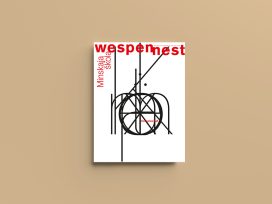New anti-Semitism and old delusions
A new wave of antisemitism is gripping Europe, especially Germany and France. Is this a serious threat however, or largely unfounded hysteria?
On the 17th June 2002, a distinctive, half-page advertisement appeared in the New York Times on behalf of the Jewish American Congress, which announces under the bold headline “Au revoir” that this organisation of American Jews is stopping all its scheduled journeys to France. The explanation states that France has become the scene of more than 300 anti-Jewish incidents in April 2002. Amongst them are attacks on Jewish pupils and passers-by and the blazing down of a synagogue in Marseille.
To the Jewish American Congress, especially the reaction of the authorities towards the incidents is scandalous: “Probation follows probation. The uppermost sentence so far: Three months imprisonment”. The newspaper advertisement continues: “To heap insult upon injury, the French authorities assert that all these incidents are caused by Maghrebinian immigrants – as if this would discharge France from the responsibility of what is happening on its territory1.”
Since the end of September 2000, France has indeed become the scene of a series of anti-Jewish attacks, ranging from the defilement of graves to arson attacks on synagogues which have roused the public. Why, however, is it considered an insult when French authorities refer to the fact that the perpetrators – where they had been caught – were almost without exception youths from Maghrebinian descent? The advertisement does not explain this; rather it gives the impression that the French judiciary is especially lenient towards anti-Jewish crimes. This might be true in some individual cases but the American Jewish Congress omits to mention in the advertisement that a degree of caution on behalf of the French Authorities has specific reasons: the prosecution of this series of anti-Jewish attacks began with a deplorable overreaction from the police and the judiciary, intensified only by the media coverage that followed.
In the night from the 10 to the 11 October 2000, a short while after the beginning of the al-Asqa Intifada, caused by Ariel Sharon’s “Temple Mount provocation”, a wooden pavilion that was used as a synagogue in the small town of Trappes, south of Paris, burned down. Immediately afterwards, six young Maghrebinians were arrested as suspected arsonists and kept in custody for months. Eventually the criminological investigation of the site concluded that a carelessly stubbed out cigarette had caused the fire. Announced one and a half years later in March 2002 by the public prosecutors, this criminological expertise did not however get through to the public. Instead, the “new-antijudaism” had been pronounced in the meantime as the next big issue to provide various events and developments with a sense of coherence and a uniform explanation.
The prelude to all this came from the French political scientist and writer , with his publication La nouvelle judéophobie (Publishers Mille et une nuits, Paris) published in December 2001. The expression chosen by him “new judeaphobia” implies that this is a new development which has no correlation to the old European and also French antisemitism. The author Taguieff did well in exploring new semantic ground with the “nouvelle judéophobie” since he only recently had been chummy with Alain de Benoist, the mentor of the intellectual extreme right, the “Nouvelle droite” and had been celebrated in their magazine “Éléments”.
To speak of “new Judeaphobia” conveniently exonerates the French audience somewhat since the bearers of this new antijudaism, apart from some anti-Zionist Palestinian-friendly natives, are identified as the “others” – immigrant children from the Maghreb, which are Arabs and in fact Muslims. Le Pen, the leader of the Front National and failed presidential candidate has already proclaimed that these people are capable of everything whilst at the same time praising the Arab-trashing Ariel Sharon.
Those who lament the “new judeaphobia” in France kill two birds with one stone: on the one hand they impressively side themselves with the Jews whilst naming an enemy which no one likes anyway, the “arabes” as the Maghrebinians in France, including all other Muslims, are called in short. No one then cares anymore what kind of findings and differentiations sociologists, who work in the suburbs and small towns that are populated by Maghrebinian immigrants have to add.
Youths from these immigrant families feel neither especially connected to the culture of their parents’ origin, nor to Islam, says Farhad Khosrokhavar, a sociologist at the French “Centre for Sociological Analysis and Intervention”. They see themselves as the victims of an unwelcoming France which lets them feel that in fact there is no place for them in France. This victimization leads them to identify with the Palestinians whilst the Jews become scapegoats for the plight that they experience.” (Le Monde, 12.4. 2002)
The hostility towards Jews which recently unloaded itself in arson attacks, violent assaults and the scribbling of graffiti does not simply stem from an Arab or Muslim tradition, but goes hand in hand with disappointment regarding the promised, but never fulfilled integration of the immigrant children. Why however is the responsibility for all this projected upon Jews? What triggers this obvious mistake, according to the sociologist Khosrohkavar, is the continually worsening Israeli-Palestinian conflict and what these youths discern from it. Since they have no chance of ever meeting any Jews in their immigrant-ghettos, their perception of Jews is formed by television pictures of aggressively acting Israeli military. In addition to this, the French media likes to portray especially those Jews that belong to a certain group: Members of the Israeli Likud-block, which are attractive to the media because of their noisy extremist militancy. They form the perfect enemy to those immigrant-children which identify themselves with the Palestinian cause. The ghetto-sociologist Farhad Khosrokhavar however emphasises that in relation to the significant volume of Maghrebinian immigrants in France, the actual count of anti-Jewish felonies attributed to this group is “remarkably small”.
The American Jewish Congress saying “Au revoir” to an antisemitic France need not know nor understand these contexts. This is not its job. Its job is to be enraged by the French ambassador to the USA, who – as the advertisement quotes with indignation – called Israel a “sh-tty little country”. The advertisement in the New York Times furthermore implicitly supports Sharon’s campaign directed towards the French Jews to settle in those parts of Israel affected by population drain by presenting a nightmare vision of an antisemitically infested France, in which Jews have to fear for their lives.
One need not know about these contexts either in France’s European neighbouring countries either. No one realizes for this matter that Germany has, just a short while after France, seemingly copied the “nouvelle judéophobie” and pronounced the concept of “neuer Antisemitismus” – as if the old, familiar antisemitism practised in Germany’s homes is not worth mentioning anymore. In Germany too, Jewish graves are being regularly defiled – largely unnoticed by the public – and Jewish institutions have to apply for police protection, yet in contrast to its western neighbour there are no huge Maghrebinian ghettos which can be located as the source of the threat. The German “new antisemitism” takes place instead in the intellectual salons.
It was here where the populist, provincial politician of the Free-Democrats Möllemann attacked the talk show-host and vice-chairman of the Central Council of Jews in Germany, Michel Friedman, with calculated attacks which crossed the borders of political decency. Friedman saw this as antisemitic insult and there it was-the new antisemitism. And by the time Martin Walser published his new novel Tod eines Kritikers (“Death of a Critic”), conspicuously aimed at the ‘pope’ of literary critics, Marcel Reich Ranicki, the new antisemitism neatly fitted into a new template of interpretation. One critic from the Frankfurter Allgemeine Zeitung, namely Jan Philipp Reemtsma, was so blinded by this set interpretation of the book that he classified the description of a nose as “strong, but delicate” and “thick lips” as highly antisemitic. Sadly, Reemtsma failed to notice that the description of nose and lips at this part of the novel belong to the goy Hans Lach.
The showbiz-like launch of the “new antisemitism” indicates, according to the political linguist Clemens Knobloch that the ” ‘politically correct’ (…) centre in Europe is losing its grip on its audience. The proof is self-evident in the Europe-wide success of right-wing populist politicians”. (Blätter für deutsche und internationale Politik, Juli 2002). To put it differently: the previously exsiting brake mechanisms of publicly acknowledged rules of political decency in post-nazi Germany are beginning to falter. In responding to this by announcing a seamless net of “new antisemitism” all over Europe, can only be understood as a last minute panic of “political correctness” that blinds its own contribution to the increasing banality of the rampant, transgenerational collective insanity that is antisemitism. In the face of inflationary antisemitism-verdicts which can hit against each and everyone, the warning voiced by the Austrian author Vladimir Vertlib in a newspaper from the Zurich, the Wochenzeitung deserves attention: “After many years of caution the real antisemits will jubilantly raise their heads and express their opinions all the more openly and boldly. Will someone listen to me then, when I protest?”
The text from the New York Times is the translator's translation and not from the original text [translator's note].
Published 25 September 2002
Original in German
Translated by
Tessa Hauswedell
Contributed by Wespennest © Lothar Baier / Wespennest / Eurozine
PDF/PRINTNewsletter
Subscribe to know what’s worth thinking about.



